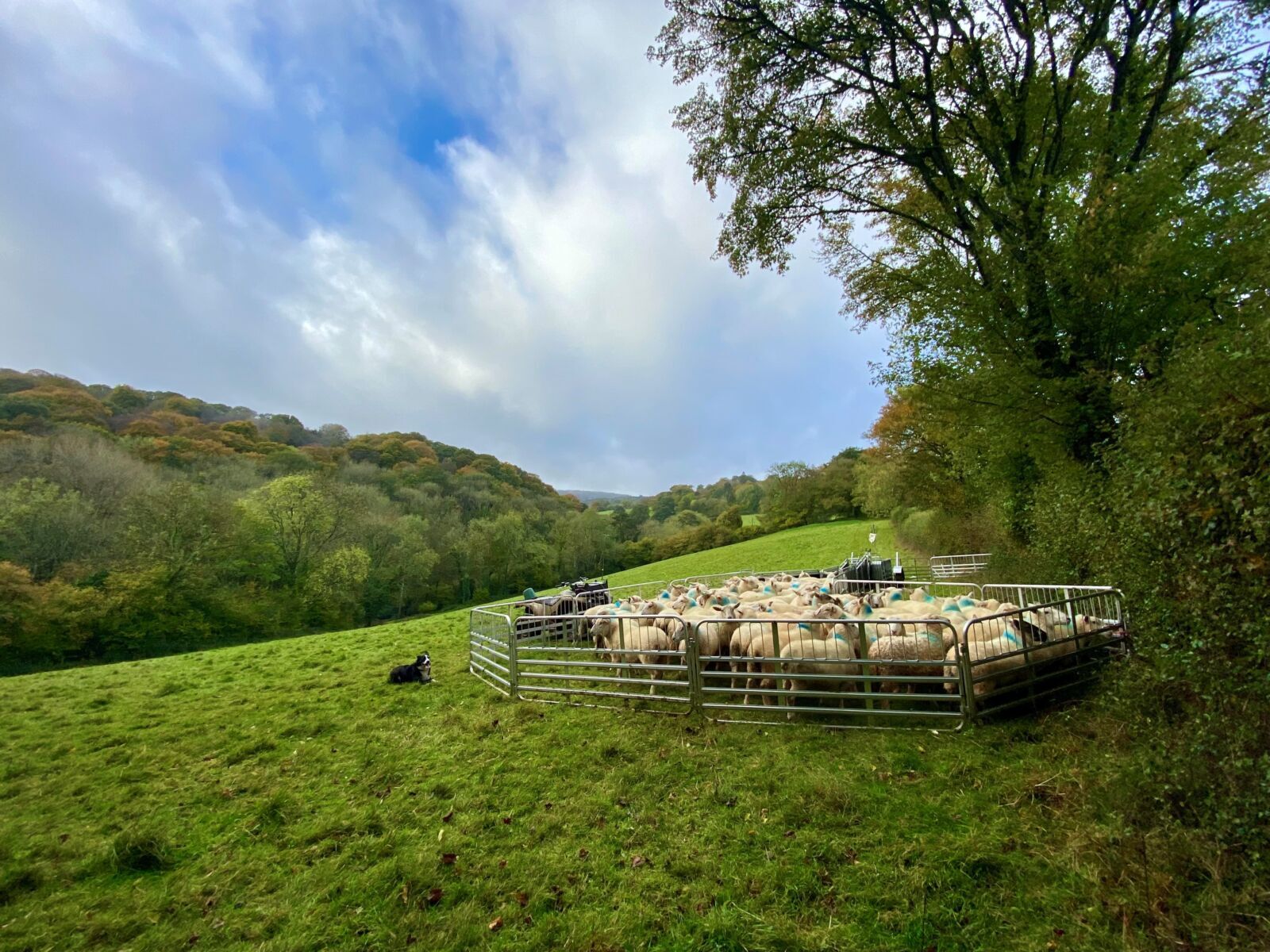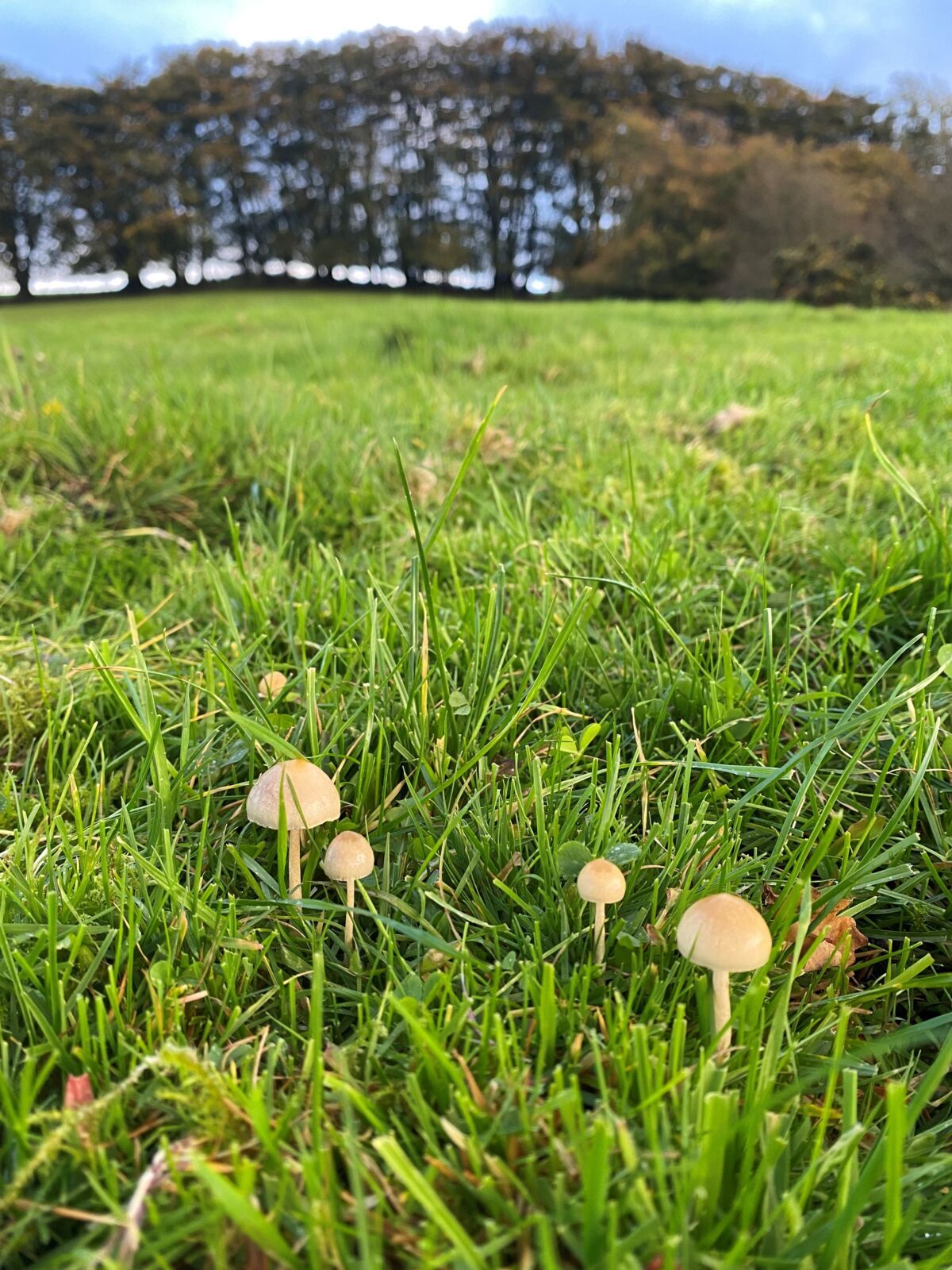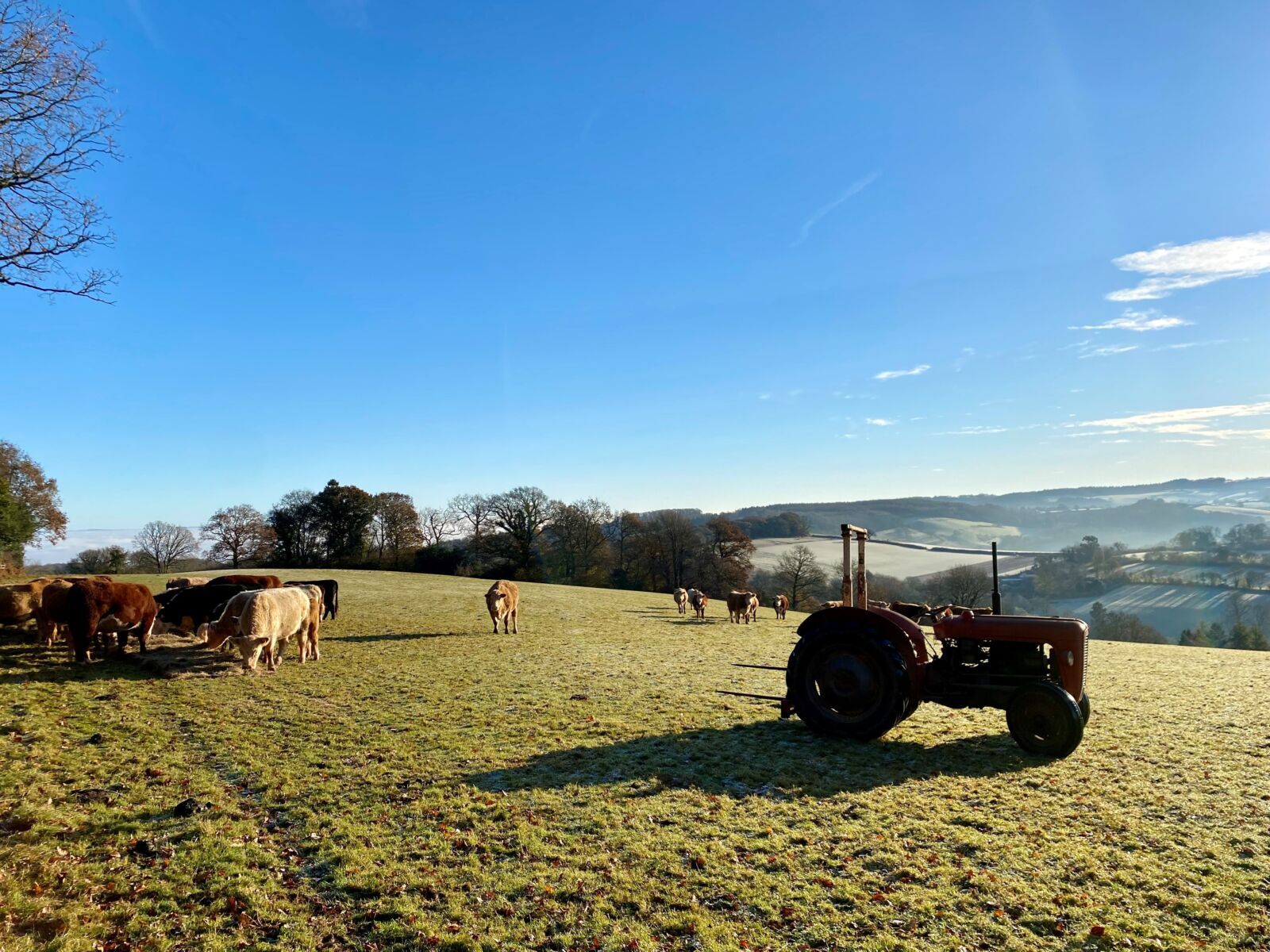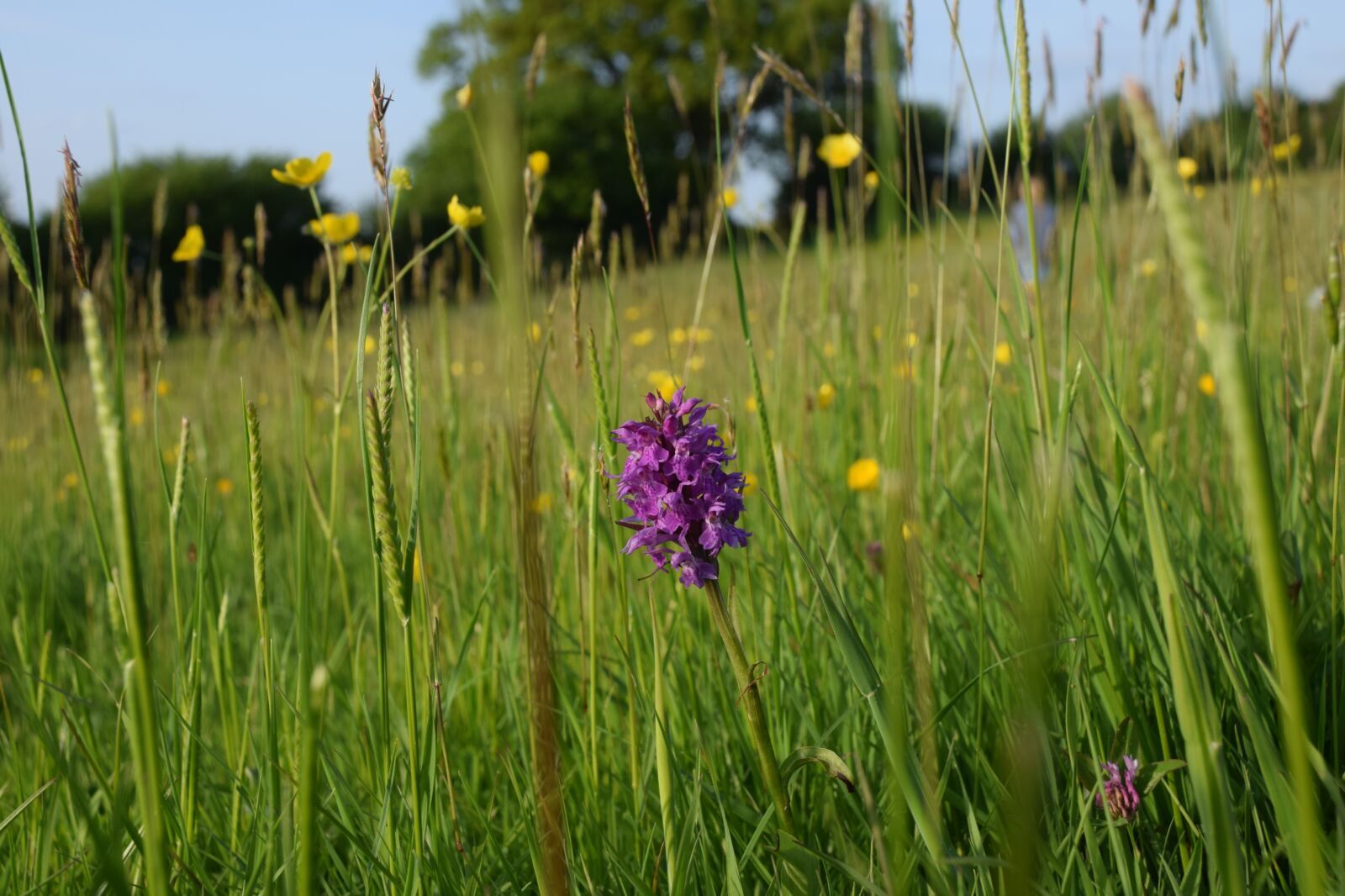Sustainable Farming Case Study Series: Tom White
Tom qualified from the university of Surrey in 2019 and now works at Evolution Farm Vets in Somerset. He has a true passion for sustainable agriculture and the future of farming having grown up on a beef and sheep farm in the Quantock hills. In this case study, Tom has conducted a review of the nature friendly farming practices being employed on one of his clients 120-hectare beef and sheep farm, exploring some of the initiatives that are being used to support a sustainable future for this farm.
Tom White, Evolution Farm Vets
Farm X is a 120ha sheep and beef farm positioned in an area of outstanding natural beauty. The farm is situated in a valley with the hills surrounding it made up of common land. This consists of open moorland, pockets of deciduous woodland and coniferous forest and is managed by a team of farm workers including Farmer X. The farm has been run with an ecological mindset for 60 years; this approach has become more focused in the last 20 years as inputs have been reduced and stocking densities modified to suit the system. The last ten years has also seen an increase in owned and rented acreage. Farm X has been involved with a higher-level stewardship (HLS) scheme for approaching twenty years to complement their nature friendly farming practices and ambitions.

The baseline for the farm in terms of wildlife and diversity is already at an enviable level with an extensive species list recorded and new species continuing to be identified. Particularly impressive are the wildflower meadows that have been restored from the existing seedbank, the extensive range of fungi that appears each autumn and a bat population that is supported by a huge abundance of insect life. An impressive network of hedges exists on the farm with woodland habitat also providing a diversity of habitat for wildlife and livestock. Farmer X should be applauded for their nature friendly practices and hopefully this reflection and assessment of the farm can help further the work already achieved and guide in helping to make the farming operation sustainable in the long term. The scale of change required to increase sustainability on Farm X is perhaps small and certainly vastly different to that of an intensively managed dairy farm for example but conserving and future proofing Farm X is incredibly important to ensure the mosaic of diverse farming operations across the UK and globe is maintained as proof of the benefits of nature friendly farming.
Farm X provides an excellent insight into the land sharing vs land sparing debate. In being surrounded by common land, essentially a ‘wilderness’ that is only very lightly managed with occasional grazing predominantly by a herd of wild ponies; the farm acts as an example of a more managed ‘island’ within a wilderness area. The comparison between the two areas in terms of species diversity and indeed movement of species between the two areas demonstrates the huge benefit brought by having different habitats and ecosystems alongside one another. Wildflower hay meadows provide a broad diversity of flowering species that bloom earlier in the summer than the heather and gorse that bursts into flower later in the year on the hill – both support the network of pollinators and complement each other by being available at different times. This is made possible by the thoughtful grazing practices used by Farm X. The fungi diversity on Farm X demonstrates how again careful grazing practices and soil management can promote diversity – the surrounding hills have the same topography yet hardly any of the fungi found on Farm X, with waxcaps being particularly abundant, can be found on the surrounding common – again highlighting the importance of a mosaic of habitat and the role of livestock in creating and maintaining biodiversity. Farm X could be used as supporting evidence for both the land sharing and land sparing debates; this ultimately reaffirms my belief that both models of land management should be embraced to encourage wider diversity.

Farm X, like many upland farms across the UK, faces challenges in remaining viable financially as the support model for agriculture in England changes from the existing BPS system to the Sustainable Farming Incentive (SFI)/Environmental Land Management (ELM) model. With the existing HLS agreement in place, care must be taken in adopting the new funding model with the risk of falling foul of double funding. As options such as maintaining wildflower meadows and low density grazing become available as part of the SFI scheme; if offering similar funding to the HLS agreement and supporting the same ecological outcome then this should be considered to ensure future financial sustainability. Taking advise from organisations such as the Farming Wildlife Advisory Group (FWAG) as well as the farm vet would be prudent before any substantial decisions are made.
Despite the good work already achieved by Farm X further gains can be made with the embracing of further regenerative farming principles. The benefits of rest periods on permanent pasture are clear to see on Farm X with the historic hay meadows demonstrating the abundant and diverse plant life following a long period of rest through the spring and early summer. Whilst it is impractical to rest all pasture for long periods during the growing season on a livestock farm there is scope on Farm X to develop a more structured grazing rotation plan. By grouping livestock into larger mobs and moving fields periodically or dividing land parcels with temporary fencing rather than set stocking for extended periods, grass species will have greater opportunity to recover and will likely yield better through the growing season. Soil structure and health will similarly benefit with longer rest periods as plant root structures are given a greater chance to develop and compaction in high traffic areas is reduced. Developing a grazing plan with Farmer X is an achievable aim, though flexibility within the plan is obviously paramount to its success.
The beef cattle on Farm X have always been outwintered. Initially on the common land as a method of bracken control now the cattle are wintered on farm predominantly in a ‘sacrifice’ field with silage and hay bales delivered via tractor or utility vehicle daily. Whilst this minimises the need for imported straw and farmyard manure movement as well as resulting in cost savings and animal health benefits there are downsides to the current method. Principally the use of a tractor through the winter has both a fossil fuel output and significant compaction impact on the land.

The cattle themselves also have an impact through compaction whilst soil that is left exposed is more likely to be eroded and generally is colonised by non-productive weeds in the spring. Whilst there is an argument that there is no such thing as a weed, and a thistle certainly has its place as a feed source for wildlife, keeping them to a moderate number through the summer grazing season would be beneficial for grass availability. A solution to the compaction could be bale grazing. Bales are arranged in the summer when the land is more conducive to tractor travel and an electric fence and mobile water system used to manage cattle movement with a back fence preventing pasture being trampled more than is necessary. A feed bank of standing hay where the field has been left to rest from the late summer would also provide a good winter feed source whilst armouring the soil to limit the damage caused by cattle compaction. Attendance at an event hosted on a neighbouring farm that is trialling bale grazing is being actively encouraged by the farm vet, peer to peer learning being incredibly effective way of engineering change.
The reduction in stocking density through a slight drop in numbers of livestock units alongside an increase in acreage has certainly seen an improvement in animal health. The cattle enterprise has used no anthelmintic, importantly with no detrimental effect, on the adult cattle in 10 years. This has had a beneficial effect in the dung beetle population on farm which have themselves aided fly control. In the sheep flock anthelmintic interventions have also been minimal in the lamb crop. This year’s lambs required just two treatments heading into the autumn. Guidance is provided through faecal egg counts. The less chemical intervention required the better for soil and invertebrate health but with the caveat that growth rates and livestock welfare must not be compromised. Efficient livestock production should not be sacrificed for the sake of chemical reduction but management practices will continue to help. Areas where Farm X can look to improve sheep management again link back to a more strategic grazing plan with increased pasture rotation. Recording paddocks that were grazed by weaned lambs in one year and then avoiding their use in the following year with the same stock class will manage parasite contamination in subsequent seasons. The low input management of livestock on Farm X and predominantly grazing set up means I would be eager to support Farm X in becoming a Certified Pasture for Life (PFL) operation. Even if finishing animals on farm is regarded as an unlikely scenario, feeding into the chain of PFL farms would be a rewarding exercise and an achievable aim that I would happily help support and facilitate.
The use of vaccines should continue to be embraced by Farm X. Minimising losses of stock wherever possible is crucial to ensuring the farm is as productive and efficient as it can be. The use of clostridial vaccine in ewes gives lambs the best chance of a good start to life but the benefit of this immunity will wane at three weeks. Vaccination of lambs at this stage will help reduce losses in the lamb crop between birth and weaning. The impact of lameness on productivity and efficiency of a sheep flock is well known. The rumbling lameness issue in Farm X’s sheep flock should be tackled with the use of preventative measures such as avoiding the use of contaminated handling areas, footbathing and implementation of a footrot vaccination protocol. Rotation of pasture will also help with suppression of lameness as reducing exposure to high traffic areas will reduce the infectious pressure. A lame ewe is less likely to get in lamb, will be in poorer body condition and will produce less milk than an equivalent ewe who is sound. A further achievable aim will be to review the flock health plan to ensure we can implement a sensible vaccination policy at the right time in the farming year. Testing of trace elements has been carried out in 2023 and continuing to assess flock health via blood testing in combination with the farm vet will ensure the identification and hopefully eradication of any undesirable diseases.
A focus on the genetics of livestock at Farm X could pay dividends by increasing the productivity of the farm. The current lambing percentage of 130-140% could be improved with the selection of rams that carry a set of genes that are more prolific via a prolificacy Estimated Breeding Values (EBV). Care should be taken not to become too centred on prolificacy alone with hardiness, milkiness and lamb vigour amongst other traits all important aspects of creating a healthy and viable flock. The use of breeding values will help future proof the farm by ensuring the livestock continue to become more productive year on year. Another aim is to create a breeding plan with Farmer X to ensure the areas where we are looking to improve are identified and focused upon. A push to increase the volume of data recorded in the cattle herd and sheep flock is helping to make further management decisions when selecting replacements and identifying unproductive animals that require culling. Continuing to interrogate this data with the farm vet is a useful exercise to identify where improvements can be made in the future.
Increasing pasture rotation is certainly an area that Farm X can continue to push. Doing so through electric fencing would be a quick method of dividing field parcels but the planting of hedges to divide fields would provide even more habitat as well as shelter for livestock in the long term. Old field maps have been discovered for Farm X with the restoration of old hedgerows an opportunity to demonstrate how truly sustainable agriculture can be. The option for capital grant works in the new farming support framework could offer good opportunities to further enhance the environment for wildlife at Farm X in the coming years. Management of existing and new hedgerows is also imperative to ensure diversity is maintained. Laying sections of hedge on Farm X will create a diversity in age and growth stages of hedges which in turn will create variety in habitat availability. It is important to ensure newly laid hedges are stock fenced to guard against stock causing damage via browsing.

Equally as important as soil health is the health of the water on Farm X. Testing the water at the head of the valley would give farm X a good baseline for how clean the water is on entering Farm X and measuring at various points along the water course up to the exit of the farm will indicate if improvements can be made. Farm X has a couple of paddocks that stock have access to the water course for drinking water. Investment in water infrastructure and fencing off these drinking holes may help improve the water quality and so provide better habitat for aquatic organisms which in turn provide a healthier food source for organisms in the wider food web. Improvements in technology mean infrastructure upgrades could be provided via solar powered pumps or with the topography on Farm X simple gravity fed systems could potentially be implemented. Communicating with the local water authority may prove beneficial in funding any necessary work.
People form arguably the most integral part of maintaining biodiversity and driving improvements in sustainability that are found on farm. Ensuring farmer X feels supported and has the guidance to make informed decisions and changes is imperative to future success. Engagement in a local regenerative farming cluster group is sure to bring both valuable ideas as well as reassurance that regenerative solutions can work. Continuing professional development (CPD) via courses hosted by the vet practice or further afield will offer opportunities to learn and hopefully re-energise and inspire if motivation for change wanes. Farm X already hosts multiple educational visits and farm walks across the year and continuing to engage with the public and other farmers will hopefully continue to be a rewarding exercise. Critiquing from peers can be one of the most useful inputs whilst demonstrating the fabulous diversity on Farm X is incredibly important for spreading the message to other landowners.
As the farm vet I look forward to helping support Farm X hosting events on farm as well as continuing to identify opportunities to get off farm to learn elsewhere and taking Farmer X with me. I have found this review incredibly rewarding reflecting on the massive benefit that Farm X brings to the local ecosystem and it has reminded me of the need to continue to shout louder about nature friendly farming in the United Kingdom and beyond. Hopefully Farmer X can see my passion and drive to support their practices and I hope to lead by example by focusing my learning in the sustainable agriculture sector and will continue to impart any knowledge gained along the way.
A Veterinary Approach to Sustainable Food & Farming
Find our more about our online modular course 'A Veterinary Approach to Sustainable Food & Farming'.